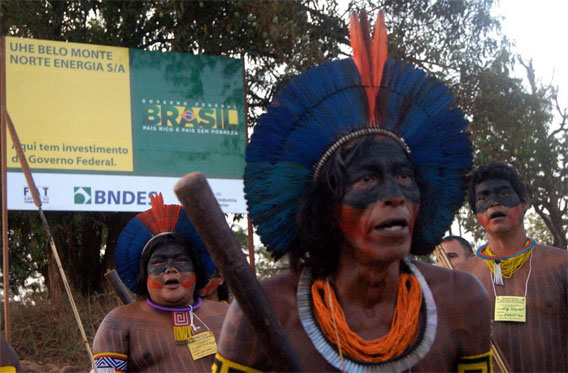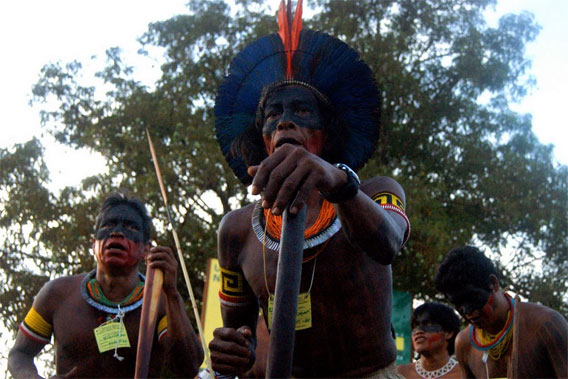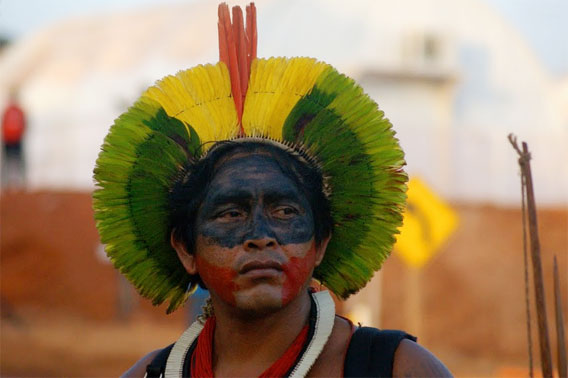
Indigenous people in front of the road that leads to the Belo Monte Dam construction site. All photos courtesy of Amazon Watch.
Hundreds of people are participating in a protest against the controversial Belo Monte dam in Altamira, Brazil, reports Amazon Watch.
Indigenous leaders, fishermen, and others dependent on the Xingu River have gathered to occupy the Monte Dam construction site. The protesters say they will stay until the $11-17 billion project is canceled.
“Belo Monte will only succeed if we do nothing about it. We will not be silent. We will shout out loud and we will do it now,” said Juma Xipaia, a local indigenous leader, in a statement. “We only demand what our Constitution already ensures us: our rights. Our ancestors fought so we could be here now. Many documents and meetings have already transpired and nothing has changed. The machinery continues to arrive to destroy our region.”
The protesters are reportedly blocking the Trans-Amazon Highway (BR-230) near Santo Antônio village, where it passes the proposed construction site, according to Amazon Watch.
Belo Monte is extremely controversial, raising widespread outcry from environmentalists, indigenous groups and their advocates. The project would block most of the flow of the Xingu River and inundate thousands of hectares of rainforest. Critics say the dam will operate well below capacity for much of the year when river levels are low. It will also disrupt fish migration patterns, affecting local livelihoods.

Indigenous ceremony after the occupation of the Belo Monte Dam construction site
An indigenous man observes the occupation of the Belo Monte Dam construction site
Related articles
Brazil boycotts OAS meeting after sharp human rights rebuke over giant Amazon dam
(10/27/2011) Brazil refused to attend a hearing convened by the Inter-American Commission on Human Rights (IACHR) of the Organization of American States (OAS) over the the controversial Belo Monte dam, reports Amazon Watch, a group campaigning against the hydroelectric project.
Last chance to see: the Amazon’s Xingu River

(06/15/2011) Not far from where the great Amazon River drains into the Atlantic, it splits off into a wide tributary, at first a fat vertical lake that, when viewed from satellite, eventually slims down to a wild scrawl through the dark green of the Amazon. In all, this tributary races almost completely southward through the Brazilian Amazon for 1,230 miles (1,979 kilometers)—nearly as long as the Colorado River—until it peters out in the savannah of Mato Grosso. Called home by diverse indigenous tribes and unique species, this is the Xingu River.

(06/03/2011) As an American I know a lot about shame — the U.S. government and American companies have wrought appalling amounts of damage the world over. But as an admirer of Brazil’s recent progress toward an economy that recognizes the contributions of culture and the environment, this week’s decision to move forward on the Belo Monte dam came as a shock. Belo Monte undermines Brazil’s standing as a global leader on the environment. Recent gains in demarcating indigenous lands, reducing deforestation, developing Earth monitoring technologies, and enforcing environmental laws look more tenuous with a project that runs over indigenous rights and the environment.














